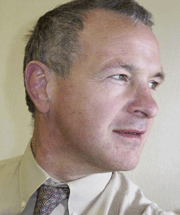E-Archive
Standards Forum
in Vol. 17 - January Issue - Year 2016
ISO 9001:2015 Breaks New Ground In Quality Management

Paul Huyton
The latest revision of ISO 9001 has been issued, identified as ISO 9001:2015. The revision makes some very significant developments in this important quality management standard. ISO 9001: 2015 conforms to the unified High Level Structure (HLS), to be used for all ISO business management standards. This follows the sub-headings of:
• Scope
• Normative references
• Terms and definitions
• Context of the organisation
• Leadership
• Planning
• Support
• Operation
• Performance operation
• Improvement
This format is already utilized for ISO55001 Asset management system and shall be the format for future revisions of ISO14001 Environment Management System, and the proposed ISO45001 Occupational Health and Safety Management.
This new structure does not determine the requirements of the standard, but may be inconvenient for companies that have structured their quality manual to the old standard. However, it will result in a common format to all ISO business management standards, which will improve the clarity and ease of conformance in the future.
Some of the key improvements are:
Leadership
Quality management systems are often seen as bureaucratic and regimented structures, not the arena for inspirational notions such as leadership. Yet almost half a century ago, W. Edwards Deming, the father of quality management decreed, "Forget management by objectives, substitute leadership." He had grasped the truth that although procedure and targets were essential, they are subordinate to leadership. The revised standard requires top management to demonstrate leadership on quality issues and details ten leadership attributes expected to be evident in the accredited organisation.
Context of the organization
The new standard defines requirement to determine external and internal issues relevant to the organisation's purpose and strategic direction. This is a new and broader vision of ISO 9001 as a comprehensive business management standard, not just focussed on methods and procedures.
Environment for the operation of processes
The new standard requires that organizations consider the "softer" aspects of the resource management, such as the psychological and social environment for the employees. The standard has travelled a long way from the early mechanistic management of systems to this approach of managing people.
Risks and Opportunities
The standard requires the use of risk-based thinking throughout the processes of planning, review and improvement. This permits a less prescriptive approach particularly to preventive actions and gives greater flexibility than previous editions. There is also the identification of "opportunities" as a factor to be included. The organisation's planning process must include actions to address not only risks but also opportunities. Such opportunities can include the potential to attract customers, develop new products and services, reduce waste or improve productivity.
Documented information
The standard is also less prescriptive in the structure and content of the documented system. Specific terms for documents, such as records, quality manual, procedures etc., have been substituted with the common term, "documented information". The organisation is now empowered to decide the form and identification of documented information. Where the standard refers only to "information", it is the decision of the organization to decide if this information is to be documented or otherwise.
Applicability
There is no longer any reference to "exclusions" from the requirements of the standard. However, an organisation must consider the scope of application of the standard to its activities, with regard to the context of the organisation, the requirements of interested parties and the actual products and services. However, the organisation can only decide to not meet any requirement if it can demonstrate that its decision will not result in failure to achieve conformity of products and services.
This revision of ISO 9001 is an exciting step towards broader, more flexible standard for assuring the effective management of quality in deliverable products and services. The above are just some of innovative aspects of the standard. It shall be very interesting to witness how the family of ISO 9001 accredited organisations and accreditation bodies shall adapt to this new approach.
For questions contact paul@mfn.li
Standards Forum
by Paul Huyton,
MFN Course Director World Wide
more information at www.mfn.li/trainers



























